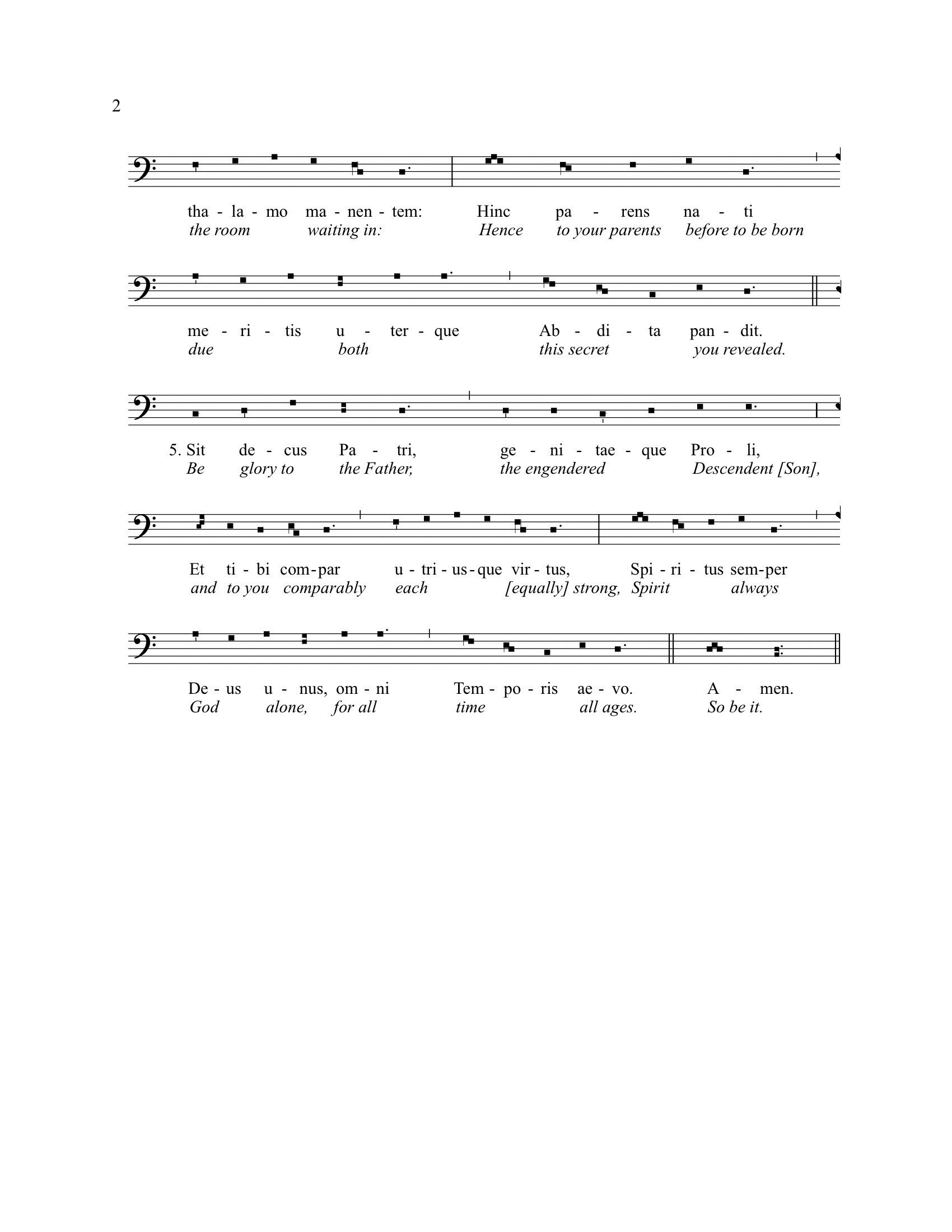This is “Pitch Notation: Nomenclature and Solfége”, section 2.5 from the book Music Theory (v. 1.0). For details on it (including licensing), click here.
For more information on the source of this book, or why it is available for free, please see the project's home page. You can browse or download additional books there. To download a .zip file containing this book to use offline, simply click here.
2.5 Pitch Notation: Nomenclature and Solfége
Learning Objectives
- Understanding how pitches may be labeled.
- Understanding solfége syllables as pitch labels and aural reference.
- Understand scale degree number notation.
In our system we label pitches using letter names. In other countries pitches are labeled using solfégeSyllables adapted to denote pitches. Originally used as a pedagogical mnemonic. syllables. This tradition originated as a pedagogical device invented by Guido. The syllables, originally Ut, Re, Mi, Fa, Sol, La, come from the initial syllable of each line of Ut queant laxis, an Ambrosian hymn to St. John the Baptist. Each line of music starts on a successively higher pitch. Guido employed this as a pedagogical tool for training singers.
Figure 2.23 Ut queant laxis

© David J. Gonzol. Used by permission.
Since Ut is the only syllable in the collection ending on a hard consonance, it was eventually replaced by the syllable Do (from Domine -Latin-“Lord”) to facilitate singing. In the 15th-century a seventh tone and syllable was added, Si, an acronym for Sancte Ioannes, the last two words from Ut queant laxis,. This became the syllable Ti in 19th-century English sol-fa.The inclusion of the syllable Ti is attributed to Sarah Glover. Ti was substituted for Si so that each solfége syllable would begin on a differing consonant. Thus we have solfége labels for pitches.
Figure 2.24 Ut queant laxis: Pitches and Syllables

Originally these syllables were fixed: each syllable referred to one specific pitch. “C” was always Do, regardless of context or chromatic alteration, “D” was always Re and so on. This fixed system is prevalent in those European countries, as well as among musicians trained in that tradition. A modified, moveable system of solfége has become prevalent in American music theory pedagogy. This will come into focus in Chapter 3 "The Foundations Scale-Steps and Scales".
One other notational convention has become commonplace in recent years. A caret is placed above a number, the caret denoting the words “scale degree.” This is adapted from the analytical symbolization of the reductive analysis techniques of the German-Austrian theorist Heinrich Schenker.
Figure 2.25 Scale Degree Numbers

Key Takeaways
- Solfége as pitch labels.
- Scale degree numbers.
Exercises
- Define solfége and list the syllables in order. Include original syllables as well as replacements and additions.
-
As an Aural Skills drill:
- Sing the solfége syllables ascending and descending.
- Concentrate upon and sing Mi-Fa and Ti-Do (diatonic half steps).
- Concentrate upon and sing Do-Re, Re-Mi; Sol-La, La-Ti (whole steps).
(Sing in a comfortable register for now. Do not pronounce the “L” when singing Sol).
- Explain the use of the caret placed above a number.




